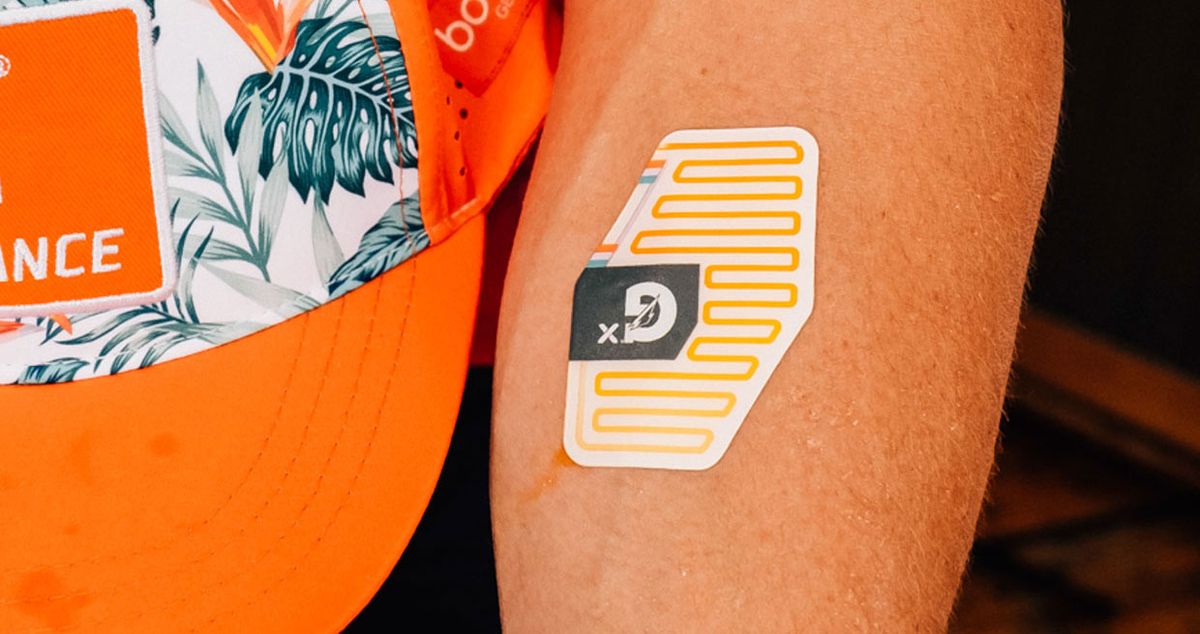Just a few months ago (what seems like an eon in the time of COVID-19), executives at the startup Epicore Biosystems expected the first consumer market for the company’s sweat-sensing microfluidics patch would be athletes. The so-called Gx, developed in partnership with Gatorade, has been in beta testing since early this year and Gatorade parent Pepsi expects to release it to consumers in the second half of this year.
It turns out, however, that Epicore’s sweat-sensing technology may have several roles to play much sooner in the response to the coronavirus pandemic, including monitoring patients’ electrolyte levels and fatigue and non-invasively measuring their sweat cytokine levels. Physicians could use that information to predict cases in which COVID-19 will become life-threatening. And—if the technology were built into an N95 respirator mask—it could also track the health and fatigue of medical staff.
Epicore Biosystems spun out of John Rogers’ research group at Northwestern University in 2017. In its simplest form, Epicore’s technology is a flexible, stretchable, single-use patch—like a temporary tattoo—that contains a network of microfluidic channels that capture and route sweat through a series of chambers filled with an assortment of chemical assays.

The Gatorade version simply measures the rate of sweating (orange, in the photo) as well as the sodium chloride concentration (purple). A mobile app uses image processing algorithms to analyze the color changes and suggests a rehydration strategy.
That’s the most fundamental version of the technology, explained Epicore CEO and co-Founder Roozbeh Ghaffari, who is a longtime colleague of John Rogers and also a research associate professor at Northwestern University’s Querrey Simpson Institute for Bioelectronics>. (Ghaffari, an IEEE member, also co-founded digital health company MC10; that company’s Biostamp wearable platform received IEEE Spectrum’s Emerging Technology Award in 2016.)
Other versions of the sweat patch designed for multiple uses are thicker, though still flexible, with built-in batteries and more electronics for on-board analysis. Instead of image analysis, some measure the conductivity of the sweat to determine levels of lactates, glucose, and creatinine as well as sweat rate and pH.
“We have deployed these waterproof patches in clinical studies,” Ghaffari says, “and explored passive modes of sweat induction. For example, [a user can wear a patch] in the shower; the heat generated induces a sufficient amount of sweat for the patch to gather.”
Epicore had already begun to look beyond athletics to other applications for its wearable sweat sensing technology. In a partnership with drug company Leo Pharma, researchers have been testing the use of wearable sweat sensors to monitor inflammation in atopic dermatitis; L’Oreal has been using Epicore’s sweat sensors to study skin pH levels. And the United States Air Force and Department of Defense’s NextFlex consortium have given Epicore funding to develop wearables for use in studying dehydration and dehydration’s effects on cognitive and physical performance in fighter pilots.
But, like so many of us, Epicore has now turned its attention to the fight against the new coronavirus.
When it comes to COVID-19, even the most basic sweat-sensing patch could be useful; people with high fevers tend to experience night sweats and staying hydrated can be a challenge.
Even more exciting may be the technology’s potential to monitor cytokine levels in sweat. Cytokines are small proteins released by the immune system; they appear to help coordinate the immune response, and they are present and measurable in sweat. In some cases, in response to the flu and the new coronavirus, a huge number are released—a so-called cytokine storm—causing harmful and possibly life-threatening inflammation.
Epicore had already started deploying sweat patches to collect sweat for lab-based analytics of cytokine levels. In the atopic dermatitis project conducted with Leo Pharma, researchers looked at cytokine differences in sweat collected from different parts of the body at different times of day, because cytokine levels are a good proxy for dermatitis flare-ups and inflammation. Researchers involved have submitted the project’s initial findings for publication.

Meanwhile, Epicore had also been preparing a wearable designed for longer, continuous use, planning pilot studies to track electrolytes—like lactate and cortisol—as well as temperature and sweat rate for use in sports science and for frail, elderly patients. This wearable, Ghaffari said, can be retrofitted for health care workers. If placed inside personal protective masks, it could track changes in respiration rate, temperature, and moisture; Epicore is currently working with partners yet to be announced to fast-track that project.
That, says Stephen Lee, Epicore CTO and co-founder, will be able to “give clinicians and emergency responders on the front lines important feedback.”
Attention IEEE members: are you part of a team responding to the COVID-19 crisis? We want to hear from you! Wherever you are and whatever you are doing, if you are helping deal with the outbreak in some way, let us know. Send us accounts of anywhere from 200 to 800 words, or simply give us a rough idea of what you are doing and your contact information. Write to: k.pretz@ieee.org
Tekla S. Perry is a senior editor at IEEE Spectrum. Based in Palo Alto, Calif., she's been covering the people, companies, and technology that make Silicon Valley a special place for more than 40 years. An IEEE member, she holds a bachelor's degree in journalism from Michigan State University.



